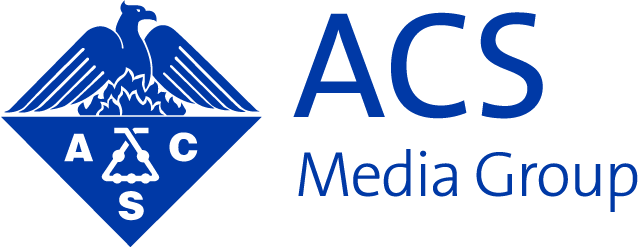So you’ve reviewed your website analytics. You know exactly how many visitors came from social media or from organic search, how long they stayed on the page, and so on. These analytics help reveal which marketing tactics are working to increase exposure for your brand, and which aren’t. What you still find yourself asking, however, is… why?
For example, why exactly are recipients deciding to open your emails and download your content? And when they do, what do customers think of your brand? What drives their purchasing decisions?
Surveys are one of the most valuable tools that marketers can use to see beyond their audience’s actions, and gain insight into what they are thinking, because at the end of the day, these are questions that only your audience can answer. A well-made survey can yield quantitative data that offers actionable insight into what interests and motivates those who matter most.
Here are four steps to creating a successful, well-made survey, and everything you need to consider at each stage:
-
Create effective, purposeful survey questions
This seems like a no-brainer, but like any marketing strategy, if you start without establishing one clear, practical goal, the plan can easily go haywire. So what information gap is this survey attempting to fill? Make sure the survey questions are focused on the answer to this question, your primary goal, so that the data will truly show you new and important insights about your audience’s perspective.
Get right to the point. You should ask as few questions as possible. The shorter and easier the survey is to take, the more likely it will be that participants complete it, and don’t exit halfway through.
Ask about concrete actions. If you are posing your questions hypothetically, asking if customers “would” do this, or “will” do that, your responses will only be pointing to hypothetical engagement. Instead, ask what customers have done in the past, and what they are doing now.
Think about structure in your questions. If you ask a lot of fill-in-the-blank, open-ended questions, trying to sort out the important, thoughtful responses from the quicker, less-specific ones can be tedious and frustrating. With multiple choice or yes/no questions, you receive quantitative results that turn into qualitative insights. Consider how you want to use the responses, and formulate your questions accordingly.
Be clear with your audience. Ask yourself: could this question be taken a different way? Make sure you are being specific enough in your questions that the potential for a user to misunderstand what you’re asking is limited. Don’t be afraid to use examples after your question to better illustrate what you mean.
-
Offer a thoughtful and unique incentive
Pay it forward. Many marketers offer monetary incentives to survey participants after the fact, but the truth is that offering an incentive beforehand improves response rates and can even improve the quality of survey answers. Since you will still need to collect contact information for the recipients in order to disburse the incentives, while maintaining anonymity, consider preparing a separate and disconnected entry form to the survey you are conducting in order to protect the respondent’s identity. However, this method comes with logistical challenges and potentially high costs.
Another tip? Consider alternative incentives besides money or gift cards:
- Sharing survey results with the participants
- A charitable donation provided by your company per response
- A sample of your product or service
- Exclusive content, like a white paper
- Swag with your company’s logo, like pens, coffee mugs, USB drives, etc.
- Discounts or coupons
Attract the right participants. Keep in mind that the incentive you offer can affect what kind of people are taking your survey. If you are offering something that anyone would want, people outside of your target audience might start taking your survey just for the reward. That is why there is an advantage to offering a trade-specific reward, like coupons for scientific equipment suppliers, or interesting company swag.
Consider making the incentive optional. A good portion of people who choose to take your survey are doing so simply because they want to voice their opinion, so be mindful that your incentive may not matter. One study showed that 37% of participants decide to take surveys primarily for the opportunity to be heard. No matter what incentive you offer then, make sure it isn’t too complicated to opt-out of receiving the incentive after completing the survey.
-
Send out your survey and follow up
The two most common ways to distribute an online survey are:
- Via email. Sending your survey via email allows you to target specific demographics and customers directly. There are databases and tools that can filter recipients by categories such as job title, geography, or research area, guaranteeing your survey is in front of a relevant audience. Google Forms has become popular, but note that it may not work in some countries. There are also some interesting new tools, like Typeform, who are making survey-taking a bit more fun, – and hopefully currating higher response rates.
- On your website. There are a variety of ways to embed a survey on your website. Either as a pop-up, at the end of a blog post, or as a final link before a customer checks out, a survey on your website will give your audience a chance to give feedback when your brand is right in front of them.
Make your move at the right time. Don’t offer a survey before customers have had the chance to properly evaluate your content, experience your product, or otherwise interact with your brand. The right time to ask for input is after the customer has expressed some interest in your brand, and has had enough time to form an opinion. This is one reason emailing your database is most effective – they all have expressed a direct interest in hearing from your brand specifically. Be wary then of promoting widely on social media without targeting. A twitter follow isn’t the same level of interest as an email subscription, and it’s easy to share outside your target audience.
Offering the survey at the right moment can show your customers that you care about improving their experience, as well.
Don’t be afraid to resend the survey, and follow up with those who haven’t taken it. This shows them that their participation is important, and that you want their input. Sometimes a different subject line is all it takes to reach someone who didn’t respond the first time.
-
Analyze the survey results and put them to use
Put your results in context. The results of your survey will have the most meaning when considered in tandem with other metrics. If you ask about your website and 70% of respondents say that their experience is satisfactory, now you have a jumping off point. If you put that number in context with “time on page” rates before and after you add new features to your site, you will have a better understanding of why and how to improve your conversion rates.
Share the results widely. To get the most out of your survey, make sure to share it with everyone in your organization who could use the information. If you survey customers about your newest product and you found that most of them are using it in an unexpected way, that could be useful not just for your marketing team, but for other departments as well.
Remember, when the results are finally in, your task has just begun. Many survey developers worry about how to draw a solid number of participants, however the value of your survey really lies in how you use the information from the survey and not total number of participants. To really set a survey up for success, you have to put careful thought into each stage, and make sure to include the end results as part of the overall strategy and action plan.
Take the results of your survey even further by sharing your findings, internally and depending on your goals, even externally with your audience, and use them in current and future decision-making processes for your brand.


















